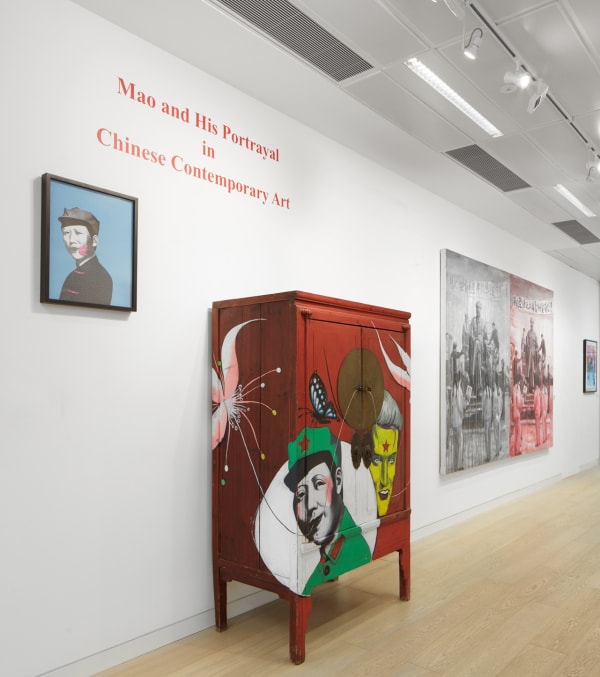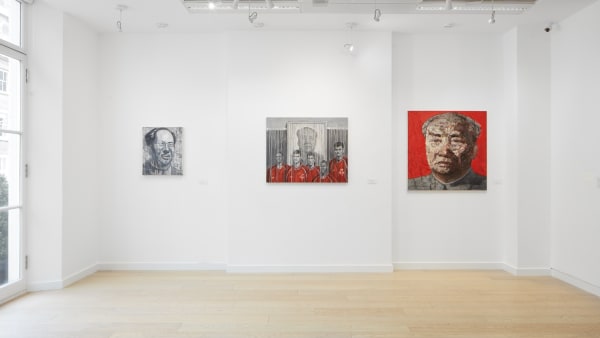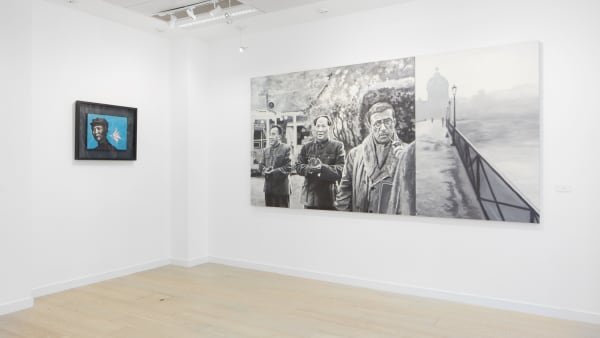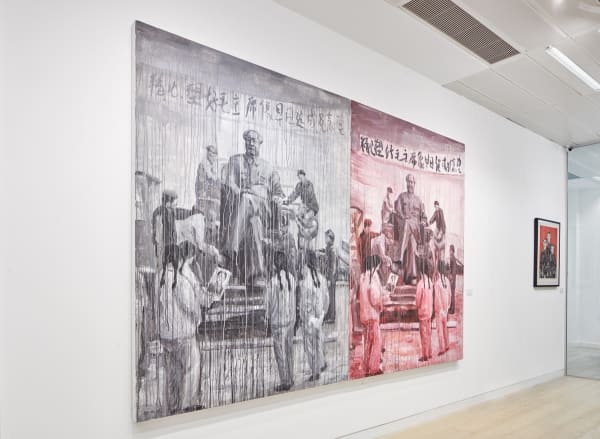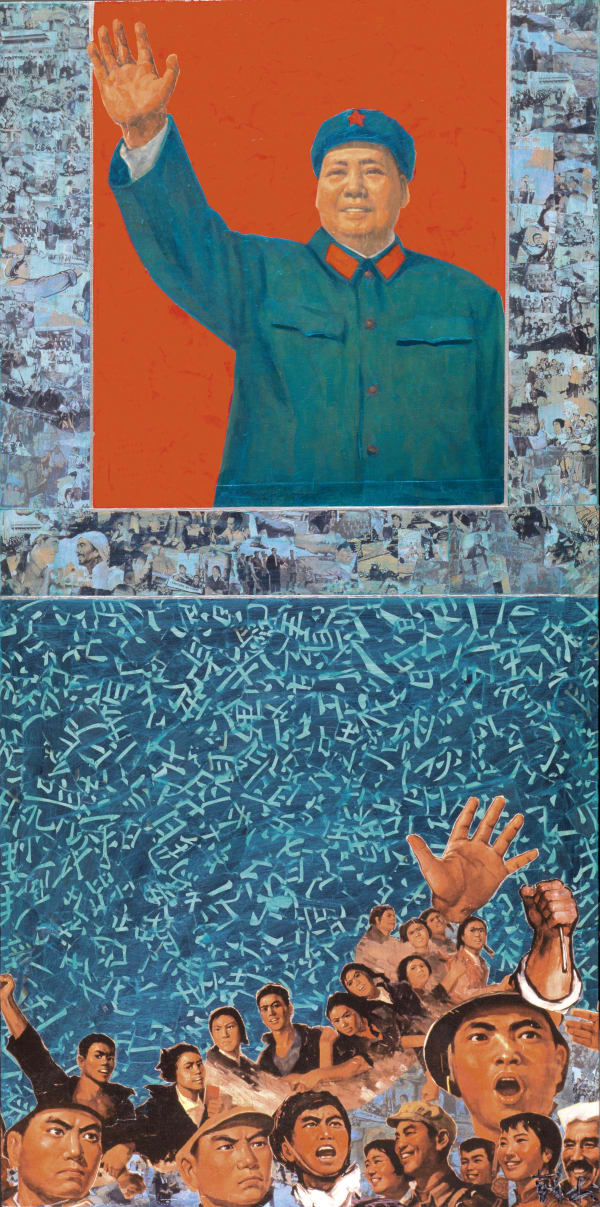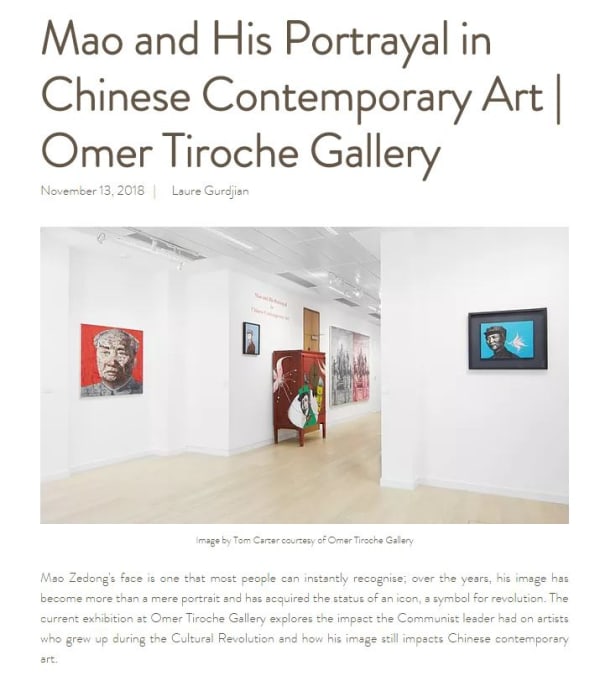Mao and His Portrayal in Chinese Contemporary Art
Omer Tiroche Gallery is pleased to announce the forthcoming exhibition Mao and His Portrayal in Chinese Contemporary Art. This exhibition explores the impact that the Chinese Communist leader Chairman Mao Zedong has had on a generation of artists who grew up during his Cultural Revolution, as well as how the renewed popularity of the figure of Mao during the last few decades has reshaped the significance of his portrait within Chinese contemporary art.
Voted by Times Magazine as one of the top 100 most influential historical figures of the 20th Century, Chairman Mao is both a divisive and provocative figure who evokes a range of sentiments amongst those who lived through his regime. As the leader of China’s Communist Party between 1943 until his death in 1976, Mao brought about revolutionary change and is credited with creating unity and stability in a country that had been plagued by civil war and foreign invasion for over 200 years. Although his methods and ideologies have come under great scrutiny from the West, he is still revered in China today as a powerful symbol for social equality and change.
During the Cultural Revolution (1966-1976) Mao led a revolt against the ruling bourgeoisie which resulted in the dissolution of land ownership as well as purges against the intelligentsia. Subsequently, art was limited to propaganda and was used as a tool to spread the ideologies of the People’s Republican Party. Mao was strongly influenced by not only the Soviet Union’s brand of communism but also their style of Socialist Realism art. He adopted their idealised imagery to become the foundation of his own propaganda art, projecting himself a prosperous leader of modernity and the revolution.
At the time of the Cultural Revolution, Mao’s official portrait could be found all over China; in private homes, restaurants, offices, classrooms, city streets and across rural landscapes. It is estimated that during this period Mao’s portrait was printed over 2.2 billion times. It also adorned the front cover of his celebrated Little Red Book; a collection of Mao’s teachings that was deemed compulsory for everyone to carry at all times. This intense visual drumming resulted in the personal cult of Mao that dominated the whole of China and resonated deeply with the generation of artists who grew up during that period, many of whom recall participating in the propaganda art initiatives and were tasked with repeatedly painting Mao’s image. As a result, the Chairman’s portrait was converted into an icon and a symbol for revolution.
Following Mao’s death in 1976, China began to open itself up towards the West and embraced the values of Capitalism. The country underwent an immense economic reform, rapidly growing to be one of the world’s leading economies which resulted in huge social and ideological changes. In response many contemporary Chinese artists, most noticeably those from the Political Pop Art movement that emerged during 1990s and early 2000s, incorporated Mao as a tool to illustrate a collective memory of China’s recent past. They used his image to provoke a social and cultural criticism of how China had succumbed to the negative influences of the West and had lost their strong collective Socialist ideals that Chairman Mao’s regime had fought so vehemently to uphold. Ironically, Mao’s portrait now decorates the banknotes in China, an indication of how his totalitarian message of communist values has been overruled by contemporary China.
This strong sense of nostalgia for Mao’s version of modern China is reflected in Ren Hong’s Red Memories No. 62, 2007. Here Hong portrays Mao with patriotic veneration; his authoritarian stance exudes the same regal air of his official portrait. Mao gazes out across a rural setting, which symbolises his affiliation to the working-class farmers. Characteristically, Hong uses a repetitive flag motif to make up the composition, which references the collective values she recalls in her childhood; when China and its people came first and not the individual consumer.
Other artists have more conflicting emotions towards Mao as an icon. Leading Political Pop artist Li Shan reflects his own personal and ideological conflict in his highly regarded Rouge series, where he recycles one of Mao’s heavily utilized portraits as a young man during his early guerrilla days. As Li grew up painting Mao’s stylized propaganda portraits, his appropriation of this particular image is a significant reference to his time spent as a youth. Li often depicts Mao wearing makeup and accompanied by a lotus flower which can be viewed as mocking, but he also neutralises the Chairman from a political context by portraying Mao as effeminate and stripping him of his masculine authoritarian stance, permitting the viewer to assess Mao objectively.
Few images created in the last century are as identifiable as that of Chairman Mao. Forty-two years after his death, his portrait still hangs over Tiananmen Square, which undoubtably solidifies the huge importance that Mao Zedong continues to hold over China. For many Chinese Mao, is a very resident memory of not only their childhood but also of a bygone era. With seven carefully selected Chinese artists, the works in this exhibition illustrate the various individual effects of Mao’s powerful iconography, which has dominated so much of Chinese contemporary art.
Featured artists: Ren Hong | Li Shan | Xinning Shi | Xue Song | Sheng Qi | Su Xinping | Gao Zengli
-
 Ren HongRed Memories, No 62, 2007Oil on canvas143 x 250 cm.
Ren HongRed Memories, No 62, 2007Oil on canvas143 x 250 cm.
56 5/16 x 98 7/16 in.$ 8,000.00 -
 Li ShanMao, 2005Mixed media55.2 x 44.5 cm.
Li ShanMao, 2005Mixed media55.2 x 44.5 cm.
21 ¾ x 17 ½ in. -
 Qi ShengMao, 2006Oil on canvas60 x 50.2 cm.
Qi ShengMao, 2006Oil on canvas60 x 50.2 cm.
23 ⅝ x 19 ¾ in.$ 17,000.00 -
 Qi ShengMao - Sculpture Red&Black (diptych), 2006Acrylic on canvas, in two partsEach: 200 x 150 cm. // 78 ¾ x 59 1/16 in.
Qi ShengMao - Sculpture Red&Black (diptych), 2006Acrylic on canvas, in two partsEach: 200 x 150 cm. // 78 ¾ x 59 1/16 in.
Overall: 200 x 300 cm. // 78 ¾ x 118 ⅛ in.$ 24,000.00
-
 Qi ShengMao-NBA, 2006Acrylic on canvas80 x 100 cm.
Qi ShengMao-NBA, 2006Acrylic on canvas80 x 100 cm.
31 ½ x 39 ⅜ in.$ 7,500.00 -
 Xue SongUntitled (Woman with Roses), 2007Mixed technique on canvas100 x 75 cm.
Xue SongUntitled (Woman with Roses), 2007Mixed technique on canvas100 x 75 cm.
39 ⅜ x 29 ½ in.$ 32,000.00 -
 Xue SongUntitled (Mao), 2007Mixed technique on canvas100 x 50 cm.
Xue SongUntitled (Mao), 2007Mixed technique on canvas100 x 50 cm.
39 ⅜ x 19 11/16 in.$ 24,000.00 -
 Gao ZengliMaoOil on canvas60 x 73 cm.
Gao ZengliMaoOil on canvas60 x 73 cm.
23 ⅝ x 28 ¾ in.£ 18,000.00


